
During the first days and weeks of life, healthcare professionals perform a series of evaluations to ensure your baby’s well-being and development are progressing as expected. These assessments are designed to detect any early signs of potential health concerns and provide reassurance for new parents. Regular monitoring helps in identifying any issues that might need immediate attention or long-term care.
Careful observation during these checks plays a crucial role in identifying common conditions or irregularities, which can significantly affect your child’s growth and comfort. From head to toe, each part of the baby’s body is thoroughly observed to confirm normal function and development.
Understanding what is included in these assessments and when to expect them can help parents feel more confident in their ability to spot signs of any possible health concerns. It is essential to stay informed so that you can actively participate in your baby’s care and ensure they get the best start in life.
Newborn Health Assessment Overview
In the early stages of life, thorough assessments are crucial for ensuring that an infant is developing properly. These evaluations focus on multiple areas, including the baby’s overall health, reflexes, and physical attributes. Each part of the baby’s body is observed to confirm normal functioning and detect any potential issues that may need attention. Regular monitoring helps ensure early intervention if required, providing the best care for the child.
The following table outlines some of the key aspects that are usually reviewed during these health checks:
| Area of Focus | Purpose | What to Expect |
|---|---|---|
| Head and Face | Check for skull shape and symmetry | Observation for soft spots and facial features |
| Limbs and Joints | Evaluate flexibility and range of motion | Movement and alignment assessment |
| Heart and Lungs | Monitor vital functions | Listening for normal heartbeats and lung sounds |
| Reflexes | Assess automatic responses | Tests such as rooting and grasp reflexes |
| Skin | Check for rashes or birthmarks | Identifying any unusual marks or discolorations |
These evaluations provide a foundation for understanding how well an infant is adapting to life outside the womb and help in identifying any necessary steps for treatment or follow-up care. Regular visits to the healthcare provider will ensure any concerns are addressed promptly.
Key Steps in the Initial Checkup
The first health evaluation after birth is crucial for assessing an infant’s overall well-being and development. During this process, healthcare professionals focus on several essential aspects to ensure the baby is adjusting well to life outside the womb. These steps help in detecting any health concerns early on and guide the care plan for the coming weeks.
Below are the primary steps involved in the initial checkup:
- General Observation: The baby’s appearance, movements, and responsiveness are closely observed to assess initial health.
- Vital Signs: Measurements like temperature, heart rate, and respiratory rate are taken to monitor basic life functions.
- Head and Neck Examination: Checking for symmetry, fontanelle condition, and any signs of abnormalities in the head and neck region.
- Respiratory Health: The doctor will listen to the baby’s lungs for any signs of breathing difficulties or irregularities.
- Skin and Extremities: The skin is examined for any unusual marks or conditions, while the arms and legs are checked for mobility and symmetry.
- Reflex Testing: Reflexes such as the rooting, grasp, and moro reflexes are evaluated to ensure normal neurological function.
- Weight and Measurements: The baby’s weight, length, and head circumference are measured to track growth and development.
These steps provide a comprehensive understanding of the baby’s health status and ensure that any immediate concerns are addressed. Regular follow-ups after the initial checkup will help maintain the baby’s health during these crucial early months.
Understanding Newborn Reflexes and Movements
At the start of life, an infant’s body is full of automatic responses and movements that help ensure survival and development. These reflexes are natural and help the baby interact with their environment, such as feeding and grasping. By observing these behaviors, healthcare professionals can assess the baby’s neurological development and overall health. A baby’s ability to move and respond instinctively is a sign of how well their nervous system is functioning.
Common Reflexes in Infants
Several reflexes are commonly seen in infants, and their presence is vital for assessing the child’s development. These reflexes typically disappear as the baby grows and gains voluntary control over their movements. Some of the most observed reflexes include:
- Rooting Reflex: When the baby’s cheek is stroked, they will turn their head toward the touch in search of a nipple to feed.
- Grasp Reflex: The baby will automatically grasp any object placed in their hand, such as a finger.
- Moro Reflex: A sudden movement or loud sound causes the baby to extend their arms, legs, and fingers before drawing them back in quickly.
- Stepping Reflex: When the baby is held upright with their feet touching a surface, they will make stepping motions as though walking.
Evaluating Movements and Muscle Tone
In addition to reflexes, an infant’s spontaneous movements play a key role in evaluating their muscle tone and coordination. These movements, such as kicking, stretching, and random arm motions, are signs of normal motor development. Any unusual stiffness or limpness in the limbs can be a sign of neurological or muscular concerns. Regular monitoring of these early movements ensures that any potential issues are addressed early, providing the best foundation for future growth and mobility.
What to Expect During the Head Examination
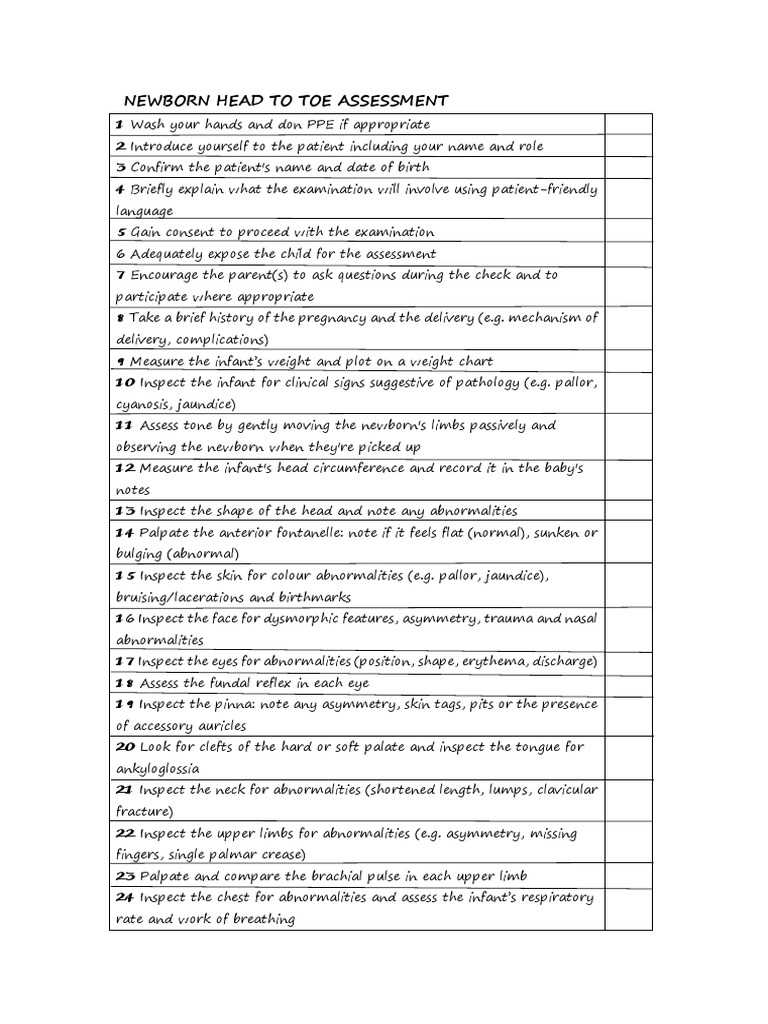
During the initial health assessment, one of the primary areas of focus is the head. The examination is crucial for evaluating the shape, structure, and any possible irregularities in the skull and facial features. Healthcare professionals carefully check for any signs of abnormal development, as this area can provide valuable insights into the overall health and growth of the infant.
In this examination, the healthcare provider will pay close attention to the following:
- Skull Shape: The shape of the head is observed to ensure it is symmetrical and free of any signs of deformation. Minor flattening can occur during birth but should improve over time.
- Fontanelles: The soft spots on the top of the head are gently palpated to check for size and tension. These areas are crucial for the healthy growth of the brain and typically close as the baby ages.
- Facial Features: A thorough check is made for any unusual marks, birth defects, or signs of facial asymmetry that might require attention.
By evaluating these aspects, the healthcare provider can ensure the baby’s head is developing normally and is free from any conditions that may need further investigation or care. Any abnormalities noticed during this step will be addressed early, providing the best chance for timely intervention if needed.
Assessing Your Baby’s Vision and Hearing
One of the critical aspects of a baby’s early health assessment is evaluating their ability to see and hear. While newborns’ senses are still developing, it’s important to identify any potential issues early on, as vision and hearing are essential for overall development. These assessments help determine if the baby is responding to visual and auditory stimuli appropriately and if further testing is needed.
Understanding Vision Development
At birth, a baby’s vision is quite limited, and their ability to focus on objects is not fully developed. However, certain signs can indicate whether their visual abilities are progressing as expected. During the evaluation, healthcare providers will observe the baby’s ability to track moving objects, focus on nearby faces, and react to light.
| Age Range | Expected Vision Milestones |
|---|---|
| 0-2 months | Can focus on high-contrast objects and faces at close range. |
| 2-3 months | Begins to track objects and faces with eyes. |
| 3-4 months | Can focus on objects and show interest in colorful items. |
Understanding Hearing Development
Hearing is another important sense that requires early attention. Babies are born with the ability to hear sounds from the environment, and their reactions to these sounds are monitored. Healthcare professionals assess the baby’s ability to respond to familiar voices, sudden noises, and music to gauge their auditory sensitivity. Early hearing screenings are also typically done to detect any potential issues that may affect speech development later on.
Skin Condition and Common Birthmarks
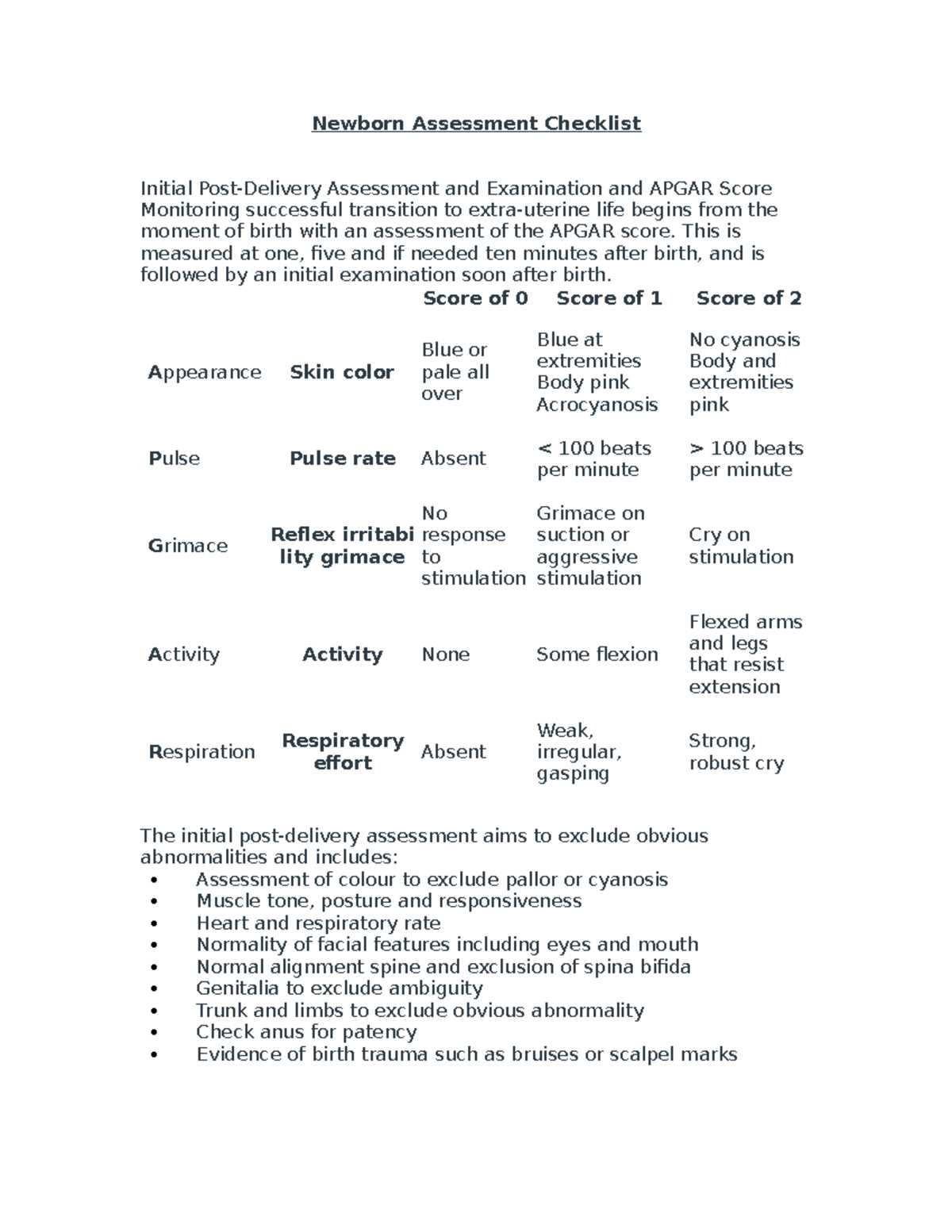
The skin is the body’s largest organ, and its appearance at birth can provide important insights into a baby’s overall health. At birth, infants often have various skin conditions that are temporary and part of normal development. In addition, many babies are born with birthmarks, some of which will fade over time, while others may persist. Understanding what to expect in terms of skin condition and recognizing typical marks can help reassure parents and caregivers during the early stages of life.
Common Skin Conditions in Infants
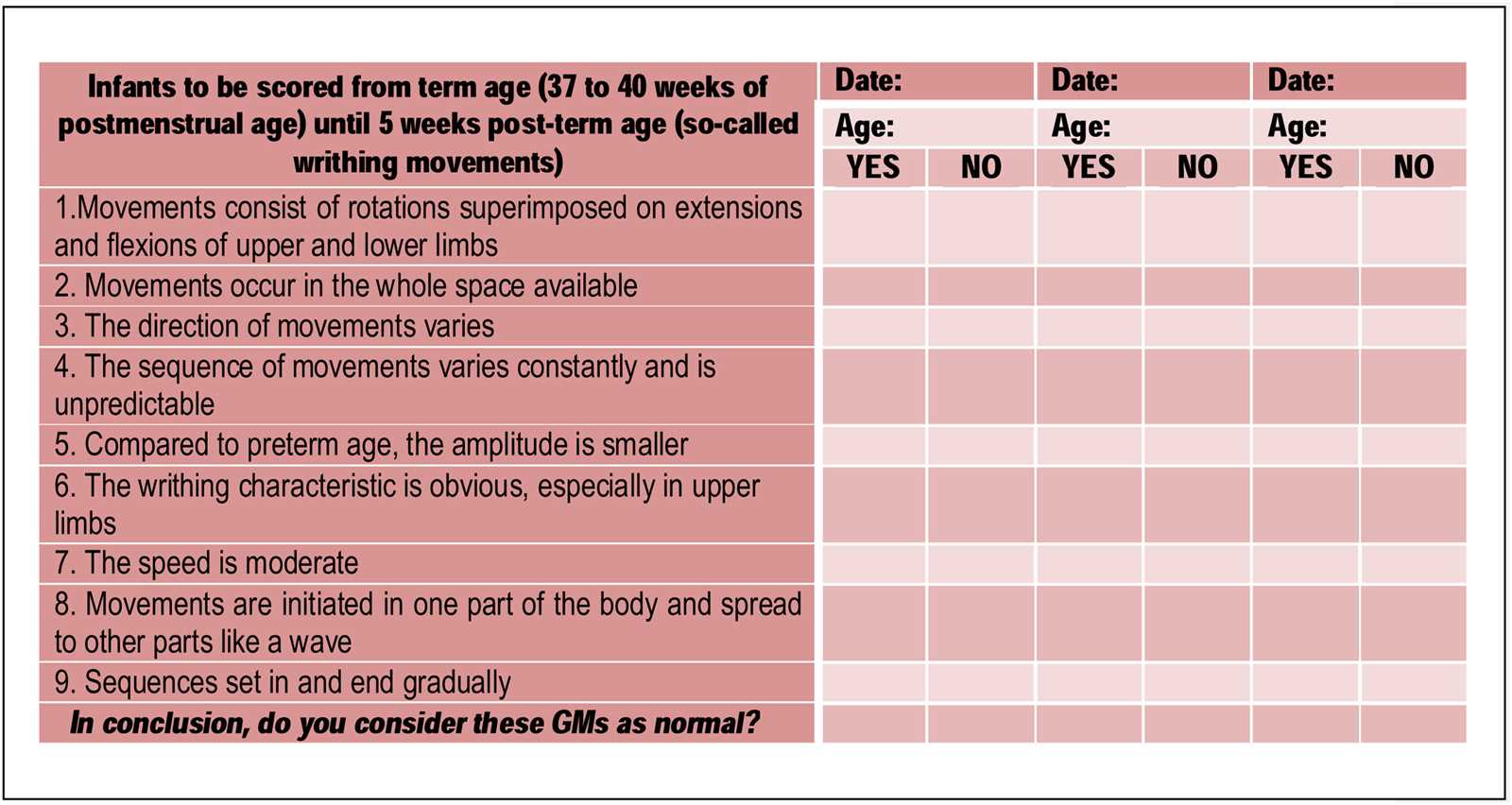
Newborns may exhibit a variety of skin conditions, most of which are harmless and will resolve on their own. These include:
- Baby Acne: Small red pimples or bumps that appear on the face, typically around the nose and cheeks.
- Milia: Tiny white cysts that appear on the skin, usually on the nose, chin, or cheeks, caused by clogged oil glands.
- Dry Skin: It is common for infants to have dry or peeling skin, especially in the first few days after birth.
- Erythema Toxicum: A rash that consists of red spots with a white center, appearing in the first few days of life.
Common Birthmarks
In addition to skin conditions, many babies are born with birthmarks. While these marks may vary in size, shape, and color, they are usually harmless. Some of the most common types include:
- Salmon Patches: Often referred to as “angel kisses” or “stork bites,” these are light red or pink patches that commonly appear on the back of the neck, forehead, or eyelids.
- Hemangiomas: Raised, red birthmarks that may appear on the face or body, typically becoming more pronounced in the first few months of life before gradually shrinking.
- Port-Wine Stains: Flat, red or purple birthmarks that can vary in size and are typically permanent.
Examining the Baby’s Heart and Lungs
Monitoring the health of a baby’s heart and lungs is a crucial part of early assessments. These two vital systems work together to ensure proper circulation and oxygenation of the body. A healthcare provider will listen to the baby’s heartbeat and lung sounds to detect any potential issues that may require further attention. This evaluation helps ensure that the baby is breathing well and that their heart is functioning properly.
Heart Health Evaluation
During the initial assessment, the healthcare professional will focus on listening to the baby’s heartbeat. The doctor uses a stethoscope to listen for any irregularities or murmurs. A normal heartbeat is strong and regular, though it may be faster than that of an older child or adult. The healthcare provider will also check for any signs of rapid or labored breathing, which could indicate heart-related concerns.
Lung Function and Breathing
Assessing the baby’s breathing is equally important. The healthcare provider will listen for any abnormal lung sounds, such as wheezing or crackling, which could indicate respiratory issues. The baby’s chest should rise and fall symmetrically with each breath, and the rate of breathing should be normal for their age. It’s also important to observe whether the baby appears to be struggling to breathe or if they are comfortably breathing without any visible effort.
Checking for Abnormalities in the Spine

During early assessments, examining the spine is an important part of evaluating a baby’s overall health. The spine plays a key role in supporting the body’s structure and enabling movement, so it is essential to ensure it is developing properly. This assessment involves checking for any signs of misalignment or deformities that could indicate potential issues with the bones or muscles along the back.
Signs of Spinal Abnormalities
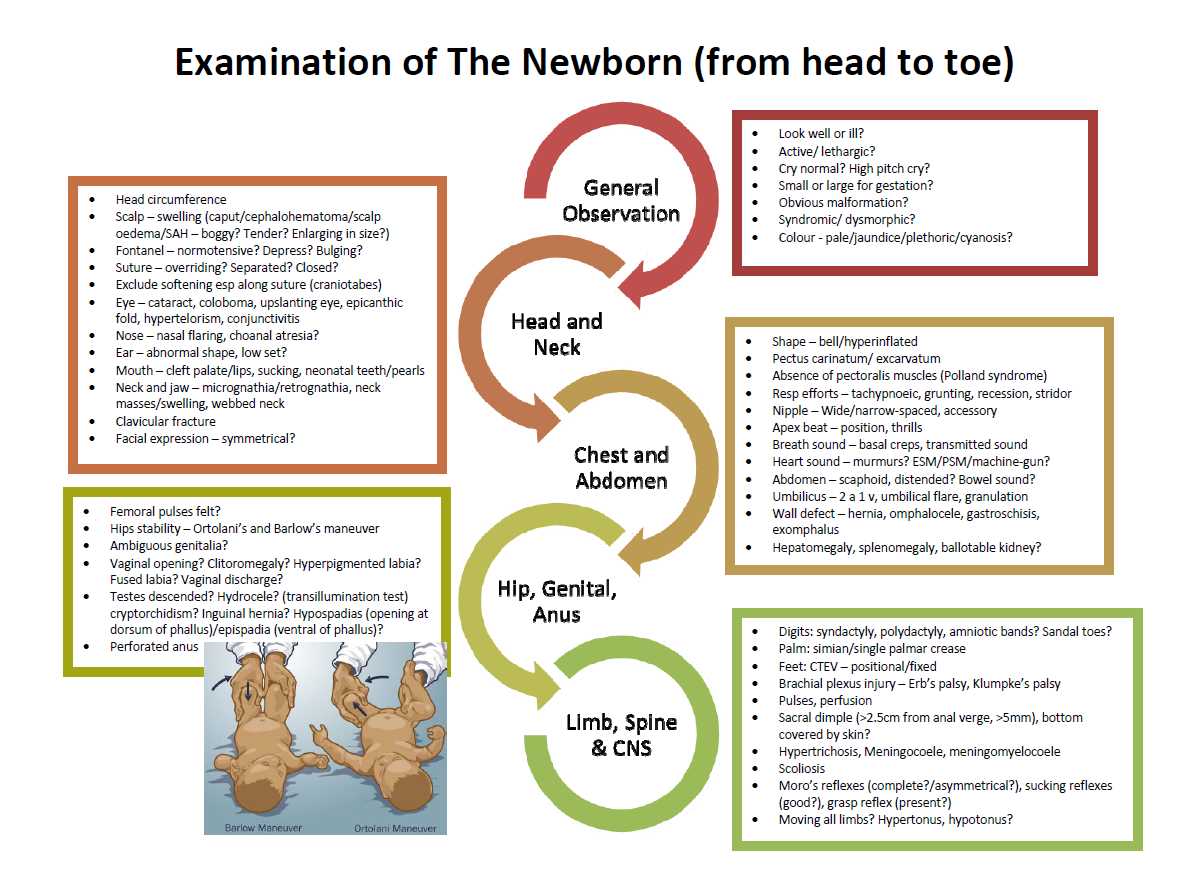
Healthcare professionals will carefully check the baby’s back and spine for visible abnormalities. Some common issues that may be detected include:
- Curvature of the Spine: The spine should appear straight from top to bottom. Any abnormal curves, such as scoliosis (sideways curvature) or excessive rounding (kyphosis), may be noted.
- Uneven Skin Folds: Uneven skin folds along the back may indicate spinal problems or congenital issues like spina bifida.
- Visible Deformities: Any lumps, bumps, or other irregularities along the spine or back should be carefully monitored.
What to Expect in a Healthy Spine

A healthy spine should appear smooth and symmetrical, with no visible deformities or abnormalities. The healthcare provider will also check for any tenderness or areas of resistance along the spine, ensuring that the bones and muscles are properly aligned. In most cases, the spine will be flexible and free of any obvious issues at birth. If concerns arise, further evaluations and imaging tests may be recommended.
How to Examine Limbs and Joints
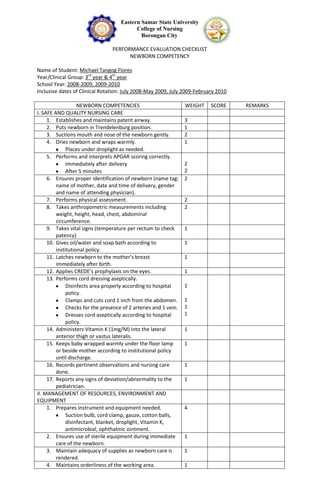
Assessing the limbs and joints of an infant is crucial for identifying any potential issues that may affect mobility or cause discomfort. This process involves checking for proper alignment, movement, and flexibility. It’s important to observe the baby’s arms, legs, and joints for signs of abnormal development or structural problems that could indicate concerns like dislocations, contractures, or deformities.
Key Observations During the Examination
During the evaluation, healthcare providers will focus on the following areas:
- Symmetry: Both limbs should appear symmetrical in length and positioning. Unevenness can suggest underlying musculoskeletal conditions.
- Range of Motion: Gently testing the movement of each joint helps to assess whether the baby’s limbs move freely and without resistance. Stiffness or limited motion may be a sign of issues.
- Joint Stability: The joints should feel stable with no signs of dislocation. Any popping or abnormal movements during testing may indicate joint instability.
Signs of Normal Limb Development
Healthy limbs and joints should allow for full, unrestricted movement without discomfort. There should be no visible deformities or swelling around the joints. The arms and legs should be flexible, and the joints should appear properly aligned. Any signs of abnormality, such as persistent stiffness, abnormal positioning, or difficulty moving a joint, may require further investigation or monitoring to ensure optimal development.
Why Monitoring the Baby’s Weight is Important
Tracking a baby’s weight is essential for evaluating their overall health and growth. Weight gain is a critical indicator of whether a baby is receiving adequate nutrition and developing as expected. Regular monitoring helps identify potential concerns early, ensuring timely intervention if necessary. Healthy weight gain suggests that the baby’s feeding habits, metabolism, and growth patterns are on track.
Key Reasons to Monitor Weight
Monitoring the weight helps in detecting early signs of any issues. Some key reasons for tracking include:
- Assessing Nutritional Intake: Consistent weight gain indicates that the baby is getting sufficient nutrition, while stagnation or loss may suggest feeding difficulties or health concerns.
- Tracking Growth Patterns: Babies typically follow a predictable growth curve, and any deviations from this curve can signal underlying medical issues that need to be addressed.
- Identifying Health Problems: Slow weight gain or rapid weight loss can indicate issues such as infections, dehydration, or metabolic disorders that may require medical attention.
When to Be Concerned
While every baby grows at their own pace, there are certain signs to watch for that may indicate the need for further evaluation:
- Weight Plateau: If the baby’s weight remains the same over multiple check-ups, it may suggest an issue with feeding or digestion.
- Sudden Weight Loss: A sudden drop in weight can be a warning sign of dehydration, illness, or insufficient nutrition.
- Failure to Thrive: When a baby consistently gains weight at a slower rate than expected, it can indicate a more serious underlying health issue.
Regular weight tracking provides a useful tool for caregivers and healthcare professionals to ensure the baby’s well-being and adjust care strategies if necessary.
Measuring Head Circumference Accurately
Accurately measuring the circumference of the head is an essential part of monitoring a baby’s development. This measurement provides important insights into brain growth and can help identify any potential health concerns early on. A proper measurement technique ensures that any variations in head size are detected and addressed promptly, supporting overall well-being.
Steps for Accurate Measurement
To ensure accurate results when measuring head size, follow these steps:
- Use a Soft Measuring Tape: A flexible, non-stretchable tape is ideal for measuring the head circumference, as it can easily contour to the shape of the head.
- Place the Tape Around the Widest Part: Position the measuring tape around the forehead, just above the eyebrows, and wrap it around the largest part of the skull, typically just above the ears and across the back of the head.
- Ensure the Tape is Snug but Not Tight: The tape should fit comfortably against the skin without compressing it. Avoid pulling too tightly as this may result in an inaccurate reading.
- Measure Twice: For the most accurate result, measure twice to confirm consistency.
Why Accurate Measurement is Crucial

Measuring head circumference regularly helps track the growth of the brain. Any abnormalities, such as a head that is too small or too large, can indicate underlying conditions like microcephaly or hydrocephalus. Early detection of such issues can lead to timely intervention, allowing for better management of any potential complications.
By following these steps, caregivers can ensure that head circumference measurements are accurate, providing essential data for monitoring the baby’s health and development.
Evaluating Infant Feeding and Hydration
Proper nutrition and hydration are crucial for the healthy growth and development of an infant. Monitoring feeding patterns and ensuring adequate fluid intake are key factors in assessing overall health. These evaluations help caregivers identify potential feeding issues early and ensure the infant is receiving the necessary nourishment to thrive.
Signs of Proper Feeding
To determine if feeding is going well, observe the following indicators:
- Frequent Feeding: The infant should be feeding regularly, typically every 2-3 hours during the first few weeks of life.
- Weight Gain: Steady weight gain is a sign that the baby is consuming enough nourishment.
- Contentment After Feeding: The baby should appear satisfied and content after a feed, with no signs of hunger or discomfort.
- Active Sucking: Effective sucking during feeding is an important sign of proper intake.
Ensuring Adequate Hydration
Hydration is just as important as nutrition. Signs that the baby is properly hydrated include:
- Frequent Wet Diapers: At least six wet diapers per day indicate sufficient fluid intake.
- Clear Urine: Urine should be light in color, signaling adequate hydration.
- No Signs of Dehydration: A hydrated baby should not show signs of dry mouth, sunken eyes, or lethargy.
By monitoring these key indicators, caregivers can ensure that the infant is receiving proper nutrition and hydration for healthy growth and development.
Identifying Possible Genetic Disorders Early
Detecting genetic conditions at an early stage can greatly improve the chances of effective intervention and management. Through careful observation and testing, healthcare providers can identify potential genetic concerns and begin necessary treatments or referrals for further investigation. Early detection helps in providing appropriate care and support, ensuring better long-term outcomes for the infant.
Common Early Indicators of Genetic Conditions
Several signs can point to the presence of a genetic disorder. These include:
- Physical Anomalies: Unusual facial features, limb abnormalities, or other structural irregularities may indicate a genetic condition.
- Growth and Development Delays: Slower than expected weight gain, height growth, or motor skill development may be early warning signs.
- Abnormal Reflexes: Some genetic conditions can affect reflex responses, leading to irregular or absent reflexes.
- Feeding Issues: Difficulty feeding or swallowing can be a symptom of certain genetic conditions affecting muscle control.
Genetic Screening and Tests
In some cases, genetic testing can be performed to confirm a diagnosis. These tests may include:
- Blood Tests: A blood sample can help detect chromosomal or genetic abnormalities.
- Genetic Counseling: For families with a history of genetic disorders, counseling can provide insight into possible risks and testing options.
- Ultrasound and Imaging: Specialized imaging techniques may reveal physical markers indicative of genetic syndromes.
By staying vigilant and seeking early tests and evaluations, healthcare providers can better identify and address potential genetic issues, allowing families to make informed decisions and access necessary resources for care.
Assessing Reflexes and Muscle Tone
Evaluating reflexes and muscle tone provides valuable insights into an infant’s neurological development and overall health. By observing the automatic responses of the body and assessing muscle strength, healthcare providers can determine if there are any abnormalities that might require further attention or intervention. Reflexes are involuntary movements that help gauge the functioning of the nervous system, while muscle tone reflects the balance between muscle contraction and relaxation.
Common Reflexes to Observe
There are several reflexes that can be assessed to understand the health of the nervous system:
- Moro Reflex: Also known as the startle reflex, this occurs when an infant is startled by a loud sound or movement, causing them to extend their arms and legs before pulling them back in.
- Rooting Reflex: When the infant’s cheek is stroked, they turn their head towards the touch and begin to open their mouth, looking for a nipple.
- Palmar Grasp Reflex: When an object is placed in the infant’s hand, they instinctively grasp it tightly.
- Babinski Reflex: The toes fan out when the sole of the foot is stroked from heel to toe.
Evaluating Muscle Tone
Muscle tone refers to the amount of tension or resistance in the muscles. This can be observed by gently moving the infant’s arms and legs and noting the resistance encountered. The following points help assess muscle tone:
- Normal Tone: The muscles should feel firm but not rigid, with the ability to move freely.
- Hypotonia: Low muscle tone, often seen as floppiness, may indicate developmental delays or neurological concerns.
- Hypertonia: Excessive muscle tightness, making movement stiff or difficult, could be a sign of a condition affecting the central nervous system.
By closely observing both reflexes and muscle tone, healthcare providers can gather crucial information about an infant’s neurological development, ensuring timely intervention when necessary for optimal health and well-being.
When to Contact a Pediatrician After the Exam
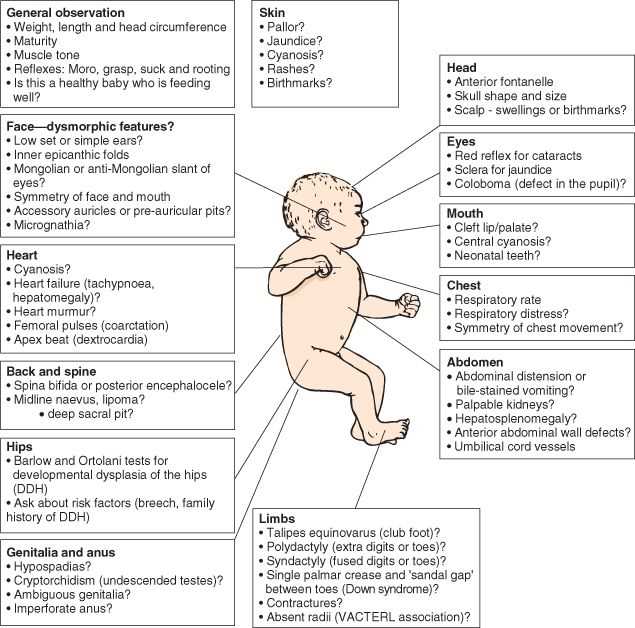
It is important for parents and caregivers to be aware of certain signs that may require a healthcare professional’s attention following an initial health evaluation. Although most findings during the check-up may be perfectly normal, there are specific situations where further consultation with a pediatrician is necessary. Recognizing these signs can help ensure any underlying issues are addressed promptly, promoting the best possible health outcomes.
Signs That May Require Attention
If any of the following signs are observed, it is recommended to contact a pediatrician for further guidance:
- Persistent Vomiting: Frequent or uncontrollable vomiting may indicate a gastrointestinal issue or infection that needs evaluation.
- Difficulty Breathing: Any signs of labored breathing, wheezing, or rapid breathing should be addressed immediately.
- Unusual Lethargy: Extreme drowsiness or a lack of responsiveness may be a cause for concern.
- Feeding Issues: Difficulty latching, refusing to feed, or insufficient weight gain may indicate feeding or digestive problems.
- Signs of Dehydration: Fewer wet diapers, dry mouth, or lack of tears when crying are signs that hydration may be a concern.
Developmental or Physical Concerns
If any of the following physical or developmental indicators are noticed, it is important to seek advice from a pediatrician:
- Abnormal Muscle Tone: Floppiness or stiffness in the limbs can be indicative of underlying neurological conditions.
- Visible Birth Defects: Any unusual physical appearance or deformity should be assessed further.
- Delayed Reflexes: Lack of expected reflexes or abnormal responses to stimuli might require further investigation.
- Unexplained Rashes or Spots: Any unusual marks on the skin that do not resolve on their own should be evaluated by a professional.
By staying vigilant and contacting a pediatrician when necessary, caregivers can ensure their child’s well-being and address any concerns early on.
Understanding Newborn Screening Tests
Screening tests conducted shortly after birth are essential for identifying certain conditions that may not be immediately apparent. These tests are designed to detect potential health issues early, even before symptoms appear, allowing for timely intervention and management. Early detection plays a critical role in ensuring better health outcomes and preventing complications related to various conditions.
Typically, a series of tests are performed within the first few days of life, which may include blood tests, hearing assessments, and other evaluations tailored to detect specific genetic, metabolic, or infectious conditions. These tests provide valuable insights into a child’s health and allow healthcare providers to take proactive measures if necessary.
While most babies will pass these tests without issue, in the event of an abnormal result, further diagnostic procedures may be recommended. Early screening gives parents peace of mind, knowing that potential health challenges can be addressed right from the start, ensuring the best possible care for the child.
Importance of the Newborn Physical Exam
Performing a thorough evaluation shortly after birth is vital for identifying any potential health concerns that may not be immediately visible. This initial assessment allows healthcare professionals to detect early signs of issues that could affect development, ensuring that necessary interventions are made promptly. The process serves as a foundation for monitoring the child’s growth and well-being in the coming months.
Key aspects of the examination include:
- Assessment of vital signs: Monitoring the heart rate, respiratory rate, and temperature to ensure they fall within healthy ranges.
- Physical development check: Observing growth patterns, skin conditions, and organ function.
- Early identification of abnormalities: Detecting conditions that may require immediate attention or long-term care.
This assessment is crucial as it provides early insights that can guide parents and medical professionals in managing the child’s health. It also sets a baseline for future comparisons and supports proactive measures to address any challenges that may arise later on.